Extracts from
…..Rock’n’Roll Unravelled
……….THE BEATLES
ALL OF THESE BEATLES EXTRACTS ARE FROM MY BOOK Rock’n’Roll Unravelled
There are only a few of the Beatles items here, to give a flavour of their story. The book has a far more comprehensive coverage.
More information about
Rock’n’Roll Unravelled
TO BUY
Rock’n’Roll Unravelled
PLEASE NOTE
An * with a date indicates an associated story in Rock’n’Roll Unravelled, that story might not appear here.
New items are added on a regular basis – check back to see the new additions.
EXTRACTS FROM ROCK’N’ROLL UNRAVELLED
Contents
How the Beatles came together:
1957
- 6 July 1957: The Quarry Men – John met Paul
1959
- 17 November 1959: Johnny and the Moondogs – Stuart Sutcliffe joined
1960
- 10 May 1960: The Silver Beetles – failed their audition to back Billy Fury
- 17 August 1960: The Beatles – opening night on the first Hamburg trip
- 17 December 1960: First of four gigs with Chas Newby on bass guitar
1961
- 5 January 1961: Paul moved to bass guitar
- 22 June 1961: Hamburg recording session with Tony Sheridan
- 19 October 1961: The Beatmakers – for one night only
- 9 November 1961: Brian Epstein’s first glimpse of the Beatles
- 9 December 1961: Disastrous first gig in the south of England
1962
- 1 January 1962: Failed their Decca audition
- 6 June 1962: First visit to Abbey Road – Pete Best recorded Love Me Do
- 18 August 1962: Ringo’s first gig as a Beatle – Johnny Hutchinson stood in
- 4 September 1962: Second visit to Abbey Road – Goodbye Pete…Hello Ringo
- 11 September 1962: Third visit to Abbey Road
The Beatles Conquered America…
1963
- 25 February 1963: Released Please Please Me c/w Ask Me Why (US)
- 22 July 1963: Released first American album Introducing the Beatles
- 31 October 1963: Ed Sullivan experienced Beatlemania at Heathrow Airport
- 26 December 1963: Released US breakthrough single – I Want to Hold Your Hand
1964
- 20 January 1964: In America, released first album on Capitol – Meet the Beatles
- 29 February 1964: First appearance on the Ed Sullivan Show
- 4 June 1964: Jimmy Nicol – Beatle for a week
- 20 July 1964: Released two singles and an album in America
1966
- 20 June 1966: Released Yesterday….And Today album in America
- 24 June 1966: Final world tour opened
- 29 August 1966: Last-ever concert
1967
The Beatles The End Game…
1969
1970
1975
……………………………………………….
…………………………….
…………….
THE BEATLES STORY…
6 July 1957: The Quarry Men – John met Paul
The Beatles’ story really started on 6 July 1957, the day that Paul McCartney went to see John Lennon’s skiffle group the Quarry Men perform at St Peter’s Church fete in Woolton, a leafy suburb of Liverpool.
Paul had been taken to see John and the boys by his friend Ivan Vaughan. After the Quarry Men’s set Paul auditioned for them. He played the guitar left handed and impressed them by knowing all of the words to Eddie Cochran’s Twenty Flight Rock. A couple of weeks later Paul was a Quarry Man.
George Harrison joined the Quarry Men in early 1958, after the Rebels.
The Rebels lineup included:
George Harrison: guitar
Peter Harrison – George’s brother
Arthur Kelly
17 November 1959: Johnny and the Moondogs – Stuart Sutcliffe joined
The prestigious John Moores Exhibition opened in Liverpool’s Walker Art Gallery. Included in the exhibits was Stuart Sutcliffe’s abstract expressionist piece, The Summer Painting.
At the end of the exhibition in mid-January, John Moores purchased the painting for £65. Sutcliffe bought a Hofner President bass guitar and joined his art college friend John Lennon in Johnny and the Moondogs, soon to rename to “The Silver Beetles”.
10 May 1960: The Silver Beetles – failed their audition to back Billy Fury
At this stage our heroes were called “The Silver Beetles”, with John, Paul and George on guitar and Stu Sutcliffe on bass. London rock impresario Larry Parnes was looking for a backing band for British rock’n’roll star Billy Fury’s upcoming British tour. Manager Allan Williams arranged an audition at his Wyvern Social Club in Liverpool. Things started badly. Their current drummer, Tommy Moore, was late and they performed most of their set with Johnny Hutchinson of Cass and the Cassanovas, another popular Liverpool combo. The performance failed to secure the gig with Billy Fury but Parnes used them to back another one of his acts, Johnny Gentle, who was about to embark on a Scottish tour.
Drummer Tommy Moore quit the group at the end of that tour.
Pete Best joined as drummer
and they finally became known as “The Beatles”
Drummer Tommy Moore left, replaced briefly by Norman Chapman.
Pete Best, from the Blackjacks, replaced Norman Chapman.
They became “The Beatles” and headed off to Hamburg.
“The Beatles” name is variously accredited to:
Buddy Holly’s Crickets and/or the Beetles gang in Brando’s movie The Wild One… although, The Wild One was banned in the UK until 1968.
“Beetles” to “Beatles” is attributed to British beat poet Royston Ellis.
They were now “The Beatles”
but not yet the “Fab Four”
17 August 1960: The Beatles – opening night on the first Hamburg trip
Arranged by their first manager, Allan Williams, the Beatles made their German debut when they opened at the Indra Club in Hamburg’s red light district. The band’s lineup was a five piece, with John, George and Paul on guitar, bassist Stu Sutcliffe and newly recruited drummer Pete Best. The Silver had just been dropped from the name “Silver Beatles” and the Hamburg audience was treated to the first performance by “The Beatles”.
This first visit to Hamburg ended in disarray in late November when three of the group were deported. George left first for working underage, followed shortly afterwards by Paul and Pete for alleged arson.
The origins of the band’s name are steeped in Beatles mythology, with the inspiration accredited to Lennon and Sutcliffe. The name is often given a couple of derivations. Homage to Buddy Holly and his backing group the Crickets and the leather-clad motorcycle gang, the Beetles, in Marlon Brando’s 1953 movie The Wild One. Although, the movie was banned in the UK until 1968 – so maybe not. John Lennon and Stuart Sutcliffe provided musical backing for beat poet Royston Ellis at a gig in June 1960 and were inspired to change the spelling of “The Silver Beetles” to “The Silver Beatles”.
Pete Best joined the Beatles from his own band, the Blackjacks. (Not the same band as John Lennon and Pete Shotton’s Black Jacks.) Best’s band also featured future-Beatles stand-in bassist Chas Newby.
17 December 1960: First of four gigs with Chas Newby on bass guitar
Chas Newby played the first of four gigs with the Beatles at the Casbah Coffee Club, a popular Liverpool venue run by Pete Best’s mother, Mona.
John, Paul, George and drummer Pete Best were back from Hamburg but with Stuart Sutcliffe staying on in Germany the group was missing a bass player. Chas Newby had been a member of Pete Best’s old group the Blackjacks. He was in Liverpool on Christmas vacation from his college course and was amenable to temporarily filling the gap left by Sutcliffe. His final performance on 31 December, also at the Casbah, left the Beatles with only half of their rhythm section.
This need for a bass player led to Paul’s permanent move to the instrument. Although the Beatles would return to Hamburg and be reunited with Sutcliffe, this effectively marked the end of his time in the group.
5 January 1961: Paul moved to bass guitar
Stuart Sutcliffe had been the bass player since John introduced him into the group a year earlier. When the rest of the Beatles returned from their first Hamburg trip in December, Sutcliffe stayed behind with his fiancée, professional photographer Astrid Kirchherr. Chas Newby took the bass spot for four gigs but when he returned to college the Beatles were once again a bass player light. Lennon initially asked Harrison to move to bass but after his refusal McCartney stepped up and swapped six strings for four. McCartney’s debut as the group’s new bass player took place at Litherland Town Hall.
Although Sutcliffe had not yet officially left the group, this effectively marked their move to a quartet. When they returned to Hamburg in April for their second residency, he occasionally joined them on stage but Sutcliffe’s days as a Beatle were all but over.
22 June 1961: Hamburg Recording session with Tony Sheridan
During their second Hamburg trip in 1961, the Beatles took time out to record with another British star of the time, Tony Sheridan. John, Paul, George and drummer Pete Best backed Sheridan on My Bonnie and The Saints, both were traditional songs arranged by Sheridan. The recording session was held at the Friedrich Ebert Halle in Hamburg, under the auspices of producer Bert Kaempfert.
This coupling was originally released by Polydor in Germany and credited to Tony Sheridan and the Beat Brothers. The name change was deemed necessary because it was felt that “Beatles” sounded too much like “peedles”, the German slang word for penis. This single was issued in Britain in January 1962. Their own debut single Love Me Do was not available until 5 October* that same year.
The soon-to-be Fab Four (well, Fab Three, Pete Best never quite made the transition from Beatle to Fab Four) also backed him on some other tracks, later released as the album The Beatles First. The recordings included two Beatles songs performed without Sheridan, Ain’t She Sweet with John taking the lead vocal and the Harrison and Lennon penned instrumental Cry for a Shadow, released as an American B-side by MGM in 1964.
Ain’t She Sweet was written in 1927 and became a Tin Pan Alley standard.
19 October 1961: The Beatmakers – for one night only
Two of Liverpool’s top groups, the Beatles and Gerry and the Pacemakers, joined forces for a one-time-only performance and created Liverpool’s first supergroup, the Beatmakers. They were playing a mid-week gig at Liverpool’s Litherland Town Hall when they decided to join forces and perform as a single unit.
The lineup comprised: guitarists George on lead and Paul on rhythm, John provided vocals and piano, Pete Best and Freddy Marsden shared the drumming stool, Les McGuire played saxophone, Les Chadwick added bass and Gerry Marsden brought additional lead guitar and vocals. Another Liverpool group Karl Terry and the Cruisers were also on the bill and Karl added more vocals to complete the Beatmakers’ lineup.
Gerry and the Pacemakers was one of the most successful of the British Invasion groups, notching up seven Billboard Top 40 hits between 1964 and 1966. In the UK they were one of the top Merseybeat groups, with nine top-30 hits including three #1s.
Karl Terry and the Cruisers were very popular in Liverpool but never managed to achieve a wider commercial success.
9 November 1961: Brian Epstein’s first glimpse of the Beatles
After being asked for a copy of the Beatles’ My Bonnie on 28 October*, Brian Epstein visited the Cavern’s lunchtime session to hear the Beatles for himself. He became their manager shortly afterwards and attended their audition with Decca on 1 January* 1962.
9 December 1961: Disastrous first gig in the south of England
Still with drummer Pete Best, the Beatles played their first gig in the south of England at Aldershot’s Palais Ballroom.
It was promoted as a “Battle of the Bands, Liverpool v London: Liverpool’s No. ‘1’ Rock Outfit The Beatles versus One of London’s Top ‘Beat’ Groups Ivor Jay & the Jaywalkers”. Unfortunately the concert was poorly advertised and only 18101 people turned up to witness the Beatles’ southern debut.
After the gig they headed off to Soho’s Blue Gardenia club in London, managed by their old Scouse mate Brian Casser. There, they surprised the punters with an impromptu set.
1 January 1962: Failed their Decca audition
On New Year’s Day the Beatles famously failed their audition at Decca Records.
It had been organised by Decca’s A&R man Mike Smith, who had travelled up to Liverpool a couple of weeks earlier to see them perform at the Cavern Club. At the audition they cut fifteen songs, including three original compositions later covered by others: Hello Little Girl (The Fourmost, 1963), Love of the Loved (Cilla Black, 1963) and Like Dreamers Do (The Applejacks, 1964). The remainder were covers and included: Barrett Strong’s Money, Chuck Berry’s Memphis Tennessee and the Teddy Bears’ To Know Him Is to Love Him. The final decision as to whether or not to add the Beatles to Decca’s artist roster was down to Dick Rowe. Sadly for the Liverpool lads, he opted for the other group auditioning that day, London’s Brian Poole and the Tremeloes.
This decision gave Dick Rowe eternal fame as the man who turned down the Beatles.
6 June 1962: First Visit to Abbey Road – Pete Best recorded Love Me Do
Shortly after returning from their third Hamburg trip, Brian Epstein secured the first recording session with George Martin, at EMI’s famous Abbey Road studios.
This was the only Beatles recording session with drummer Pete Best. They recorded four songs: Love Me Do, PS I Love You, Ask Me Why and Besame Mucho, the latter was written by Consuelo Velazquez. This Pete Best version of Love Me Do did not see the light of day until the release of Anthology 1 in 1995.
The Beatles were now the “Fab Four” …and a legend was born.
18 August 1962: Ringo’s first gig – Johnny Hutchinson stood in
Ringo’s first gig as the official Beatles drummer was in Birkenhead, at the Port Sunlight Horticulture Society’s After Show Dance at Hulme Hall. This was not the first time that Ringo had played with the Beatles. When he was with Rory Storm and the Hurricanes, he filled in for Pete Best when both groups were appearing in Hamburg.
There was a two-gig gap between Pete Best leaving and Ringo’s arrival as the Beatles’ new sticksman. For those couple of performances, the vacant drumming stool was occupied by Johnny Hutchinson of the popular Liverpool group the Big Three. He had previously acted as a surrogate drummer for the group when he helped them out at the ill-fated Billy Fury audition on 10 May* 1960.
4 September 1962: 2nd visit to Abbey Road – Goodbye Pete…Hello Ringo
By the time that the Beatles returned to Abbey Road for their second recording session, Ringo Starr had replaced Pete Best as the Fab Four’s drummer.
Just two songs were recorded that day, Love Me Do and How Do You Do It. Producer George Martin was very keen for the Beatles to release the Mitch Murray penned How Do You Do It as their first single but the Liverpudlians were adamant that they only wanted to release their own material as their debut single. All was not lost for Murray, another very popular Liverpool group Gerry and the Pacemakers released the song as their debut single and scored a British #1.
It took the Beatles until May 1963 to hit the top spot, with their third single, From Me to You.
11 September 1962: Third visit to Abbey Road to record Love Me Do
Producer George Martin had not been satisfied with the second recording of Love Me Do, made on 4 September* with Ringo on drums. When the four Liverpudlians returned for their third trip to Abbey Road, Martin had secured the services of session drummer Andy White.
A third version of Love Me Do was recorded, where Ringo took a backseat and played tambourine on Love Me Do and maracas on the UK B-side PS I Love You.
They also recorded several takes of another new Lennon and McCartney song, Please Please Me. This was a different arrangement to the one released as their second UK single. It was more in the style of a slow Orbison-esque ballad. Sadly, none of those takes survived for posterity.
25 February 1963: Released Please Please Me c/w Ask Me Why in America
Following the Beatles’ success in the UK, producer George Martin tried to interest EMI’s American sister company, Capitol Records, to take up their option on the Beatles. Capitol was not convinced that the Liverpudlians would sell in America so passed up on the opportunity to release their material. Seizing the moment, the small independent label Vee-Jay jumped at the chance to market the Beatles and this single became the Fab Four’s first-ever release in America. It failed to chart, as did their second single From Me to You. Vee-Jay’s first taste of chart success came with their third release in January 1964, which coupled the first two A-sides, Please Please Me and From Me to You.
22 July 1963: Released first American album Introducing the Beatles
The first Beatles album to be released in America was on the small, independent Vee-Jay label, founded in 1953 in Gary, Indiana. Vee-Jay had picked up the Beatles as an add-on when they signed up Frank Ifield.
After producer George Martin failed to persuade EMI’s American subsidiary Capitol Records to pick up their option on the Beatles, Vee-Jay grabbed the opportunity with both hands. Introducing the Beatles was the Fab Four’s first-ever American album, with two versions released by Vee-Jay. This first issue included Love Me Do and PS I Love You. The album was withdrawn and re-released on 27 January* 1964, with Please Please Me and Ask Me Why replacing those two tracks.
This release date of 22 July is often quoted in discographies but is disputed by some Beatles historians. There is much speculation as to when the first copies of the album leaked into the marketplace, before it was reissued in early 1964.
When Capitol did finally wake up to the fact that the Beatles were taking the music world by storm, Vee-Jay came under severe pressure to bow out. Before finally giving in to Capitol they made the most of their 14 Beatles songs. Vee-Jay produced four singles and 5 albums. The songs were recycled: on two versions of Introducing the Beatles, The Beatles vs The Four Seasons, Jolly What! The Beatles & Frank Ifield on Stage, and Songs Pictures and Stories of the Fabulous Beatles.
(This release and its reissue are the only Vee-Jay albums to be included in this book’s Beatles discography because the other Vee-Jay albums simply reused the same tracks.)
31 October 1963: Ed Sullivan experienced Beatlemania at Heathrow Airport
The Fab Four were returning from their first foreign tour, a hectic week of radio, TV and live performances in Sweden. They flew back into the UK at London’s Heathrow airport and were greeted by hundreds of screaming fans.
By sheer coincidence, American TV host Ed Sullivan was passing through the airport at the same time and witnessed the excitement caused by the Beatles. This personal introduction to Beatlemania influenced his decision to have the Fab Four on his show four months later.
26 December 1963: Released US breakthrough single – I Want to Hold Your Hand
The Beatles’ breakthrough in America came with their fourth single. Following the release of two singles on Vee-Jay and one on Swan, Capitol Records finally decided that the Beatles were worthy of a shot at the American charts.
In an interview with Beat Instrumental, Paul McCartney suggested that the bass line for I Saw Her Standing There was inspired by Chuck Berry’s I’m Talking About You.102
20 January 1964: In America, released the first album on Capitol – Meet the Beatles
By the time that Capitol deigned to release the Beatles’ first US album it had already been preceded by two other albums, Vee-Jay’s Introducing the Beatles on 22 July* and Beatlemania! With the Beatles, from the Canadian arm of Capitol on 25 November*.
Meet the Beatles contained ten Lennon and McCartney compositions and one from George Harrison, Don’t Bother Me. The only cover, Till There Was You, was written for the 1957 musical The Music Man and provided Peggy Lee with a minor UK hit in 1961.
9 February 1964: First appearance on the Ed Sullivan Show
Ed Sullivan had been aware of the Beatles since 31 October* 1963, when he had experienced Beatlemania first hand at London’s Heathrow airport.
For their legendary debut appearance on the Ed Sullivan Show they performed five songs live: All My Loving, Till There Was You, She Loves You, I Saw Her Standing There and I Want to Hold Your Hand.
This first Beatles outing was watched by 73 million people.
Singer Davy Jones was also on the show, two years before his Monkees TV debut.
4 June 1964: Jimmy Nicol – Beatle for a week
On the eve of their first world tour Ringo was taken ill with tonsillitis and Jimmy Nicol stepped in to occupy the vacant drumming stool. After a brief rehearsal the day before, Nicol played his first gig as a Beatle on 4 June at the KB Hallen in Copenhagen, Denmark.
He went on to play dates in the Netherlands and Hong Kong, before making his final appearance on 13 June in Australia, at Adelaide’s Centennial Hall. Ringo rejoined the Fab Three in Melbourne on the 17th and Jimmy Nicol’s 15 minutes of fame were over.
Jimmy (sometimes Jimmie) Nicol emerged out of the 2I’s British skiffle scene and was a member of Colin Hicks and the Cabin Boys in 1957 and ’58. Shortly before his stint with the Beatles he had formed the Shubdubs and also played with Georgie Fame and the Blue Flames.
20 July 1964: Released two singles and an album in America
The British Invasion was now in full swing. On 4 April* the Beatles dominated the Billboard Hot-100 with twelve singles on the chart, including all five top positions.
Mid-1964 was the height of Beatlemania in America and their record label, Capitol, took full advantage of this by releasing two singles and an album on the same day!
SINGLES: I’ll Cry Instead c/w I’m Happy Just to Dance with You + And I Love Her c/w If I Fell
In America Capitol Records squeezed the last drop out of the Beatles’ potential, by combining album tracks and releasing them as singles. Combinations were chosen, such as these two singles, which were never released in their British homeland.
ALBUM: Something New
Well at least half of the album was new to American fans. This third album from Capitol contained nine Lennon and McCartney songs and two covers.
The first cover was a Larry Williams composition Slow Down, recorded by him as the B-side of his 1958 single Dizzy Miss Lizzy. The other cover, Matchbox, was the first of three Beatles covers of songs associated with Carl Perkins. When Perkins released Matchbox as a single in 1957, he gave himself the writing credit. The song actually had a little more history than that. It was based on Match Box Blues recorded by Blind Lemon Jefferson in 1927, which itself was inspired by Ma Rainey’s 1924 song, Lost Wandering Blues.
20 June 1966: Released Yesterday…And Today album in America
The Beatles’ tenth Capitol album, Yesterday…And Today, was originally released on 15 June with the notorious “butcher” cover. This depicted the Beatles dressed in butcher’s aprons and draped with cuts of raw meat, false teeth and nude, decapitated toy dolls.
There was an outcry from fans and DJs alike, with major stores refusing to stock the album. It was quickly withdrawn and replaced on 20 June with a ‘nice’ cover. The new sleeve depicted the Beatles leaning on a steamer trunk. However, when the album found its way back into the shops many of the original sleeves had simply been re-covered by pasting the “trunk” cover on top of the original “butcher” cover. These new covers could be steamed off to reveal the original “butcher” cover underneath.
There was only one cover song on the album, Act Naturally, a country #1 for Buck Owens in 1963. With the exception of the traditional song Maggie Mae on the Let It Be album, this was the last cover song that the Beatles released in America.
The last cover song released in Britain was Larry Williams’s Bad Boy, on the 1966 album A Collection of Beatles Oldies.
24 June 1966: Final world tour opened
The Beatles began their ill-fated final world tour, taking in Germany, Japan and the Philippines. To be followed by their final American tour. Having played in Munich and Essen, the Beatles gave their last-ever Hamburg performance on June 26. From there the tour was all downhill.
Their next port of call was Japan, to give five shows at Tokyo’s Nippon Budokan Hall. This was the first time that the hallowed halls of the Budokan had been used by a rock’n’roll band. To many of Japan’s martial arts followers the Budokan held a great spiritual significance. Protests against the Beatles included death threats and resulted in a strong police presence at the concerts. These death threats also kept the Fab Four virtual prisoners in their hotel room. In order to alleviate the boredom they collaborated on the painting Images of a Woman.
When the Beatles flew on to the Philippines things went from bad to worse. On 4 July they played two shows at the Rizal Memorial Football Stadium. The problems arose when the president’s wife, Imelda Marcos, arranged a party at the Palace and invited the Fab Four to attend. Brian Epstein had respectfully refused the invitation but it was more of a summons than a request. Imelda Marcos took the refusal as a personal snub and the group had a very uncomfortable exit from Manila.
If they thought that things couldn’t get any worse, the American tour was on the horizon and the teen magazine Datebook was about to publish the infamous John Lennon quote about being “more popular than Jesus”, first published by London’s Evening Standard newspaper on 4 March*…
29 August 1966: Last-ever concert
The last performance of this final North American tour was at San Francisco’s Candlestick Park. The Beatles’ concert days were over. One of the support acts that day was an American band The Cyrkle, which was also managed by Brian Epstein.
The Beatles’ final American tour was set for a bumpy ride. Two weeks before their opening night, teen magazine Datebook had published the infamous John Lennon quote that they were “more popular than Jesus”. The article had originally been published on 4 March* in London’s Evening Standard newspaper. It received no adverse reaction in Britain but America was outraged. To try to placate the situation, Lennon offered an apology at a press conference held when they arrived in Chicago.
The Fab Four opened what would become their final American tour on 12 August, at Chicago’s International Amphitheatre. The tour continued amid death threats, angry demonstrations and public burning of their records. Their final Canadian concert was held on 17 August at Toronto’s Maple Leaf Gardens. At the Memphis concert held at the Mid-South Coliseum on 19 August, they had to contend with robed Ku Klux Klan members in the car park and also someone throwing a gunshot-sounding firecracker onto the stage. The adverse publicity took its toll on ticket sales and 11,000 seats went unsold at their return visit to New York’s Shea Stadium on 23 August.
26 December 1967: Magical Mystery Tour Premiered on UK TV
The UK premiere of the Beatles made-for-TV movie Magical Mystery Tour received a thorough panning from the critics. Despite being a colour production, it was shown on BBC-1 in black and white on Boxing Day, in the primetime Christmas evening schedule.
At that time BBC-1 was not capable of showing colour productions. Fans had to wait for the repeat on BBC-2 on 5 January to see the movie in all its colour glory.
The soundtrack was originally released in Britain on a six-track double EP.
2 January 1969: Start of the Get Back Project
Paul McCartney came up with the idea of taking some new songs, rehearsing them for a concert and an album, whilst filming the whole thing as an integrated project. The Beatles met at London’s Twickenham Studios to make a start on their new venture.
By this time Beatle relationships were at an all-time low. On 10 January George Harrison stormed out of the session, saying that he was quitting the Beatles. Filming and recording lumbered on throughout the month, with the legendary rooftop performance taking place on 30 January*. Work continued on the project, including a book to accompany the album. Glyn Johns was responsible for turning the sessions into an album, with little involvement from the Beatles. He produced an album called Get Back but scheduled release dates came and went. In the meantime the Beatles returned to the studio to record their next album, Abbey Road. Get Back remained unreleased but the saga continued. Phil Spector entered the picture and started work on 23 March* 1970. He took the existing material and transformed it into what would become the Beatles’ final album, Let It Be.
Keyboardist Billy Preston also worked on the Get Back project with the Beatles. The Fab Four had previously been introduced to Preston when they were opening for Little Richard on their fourth Hamburg trip in November 1962. The sixteen-year-old Preston was in Little Richard’s backing band. This was also the first time that Ringo Starr had been the Beatles’ official drummer in Germany. The previous trips had featured his predecessor Pete Best.
30 January 1969: Final rooftop gig
As part of the Get Back project, which had started on 2 January*, the Beatles gave their last ever ‘public’ performance, from the London rooftop of their Apple building at 3 Savile Row. Unbelievably there were complaints about the noise. The set even brought the traffic below to a standstill. The police intervened and eventually, after deliberating for half an hour, stopped the performance. With Billy Preston on keyboards they performed: Get Back, Don’t Let Me Down, I’ve Got a Feeling, The One After 909 and Dig a Pony.
When they finished John quipped that he hoped that they had passed the audition. This was possibly a reference to their previous audition failures, Billy Fury’s backing band on 10 May* 1960 and a Decca recording contract on 1 January* 1962.
10 April 1970: “Paul is Quitting The Beatles”
A press release planned to accompany Paul’s debut solo album, McCartney, found its way prematurely into the press. Britain’s Daily Mirror newspaper read between the lines and led with the front page headline, “Paul Is Quitting The Beatles”.
McCartney never actually said that he was parting company with the band but the writing had been on the wall for so long that the inevitable became reality. Ringo quit the group back in August 1968. The Get Back project, which began on 2 January* 1969, was fraught to say the least but the polarization between McCartney and the others came with John Lennon’s insistence on using business manager Allen Klein.
21 February 1975: John Lennon released his album Rock’n’Roll (UK)
Made during John Lennon’s “lost weekend”, this was an eventful time resulting in disputes with both producer Phil Spector and Chuck Berry’s publisher Morris Levy.
Having worked with Spector on a number of occasions, Lennon enlisted his help once again to produce an album of some of his favourite rock’n’roll songs. The sessions proved to be highly volatile and eventually fell apart. Spector had paid for the studio time and, believing that he was entitled to the results, absconded with the tapes. Lennon eventually retrieved the recordings but only used four of the tracks produced by Spector. This was the last time that Lennon and Spector ever worked together.
Chuck Berry’s publisher, Morris Levy, had previously brought a lawsuit against Lennon because he had used some of Berry’s lyrics from You Can’t Catch Me in his Beatles song Come Together. To placate the situation Lennon agreed to include Berry compositions on his forthcoming album. When Lennon gave Levy the tapes from some of the early Spector sessions, Levy released these songs as the album Roots: John Lennon Sings the Great Rock & Roll Hits, claiming that it was an official album sanctioned by Lennon. Suit and countersuit followed. These resulted in the withdrawal of the Roots album and the early release of the official Rock’n’Roll album. Rock’n’Roll included two Chuck Berry songs, You Can’t Catch Me and Sweet Little Sixteen.
The Beatles Story – to be continued…
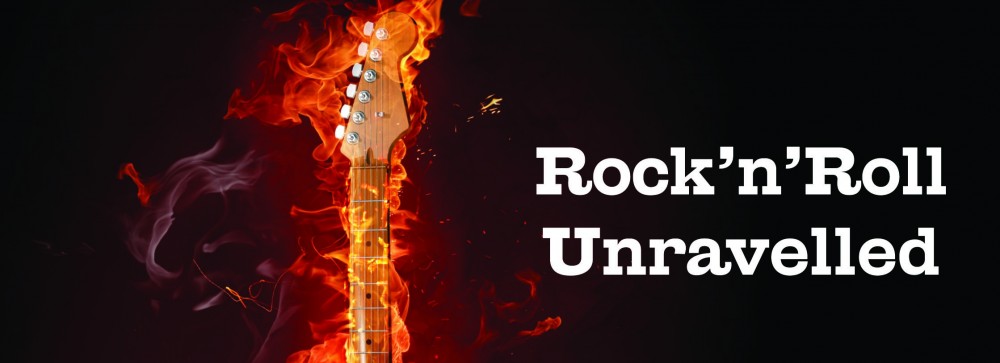
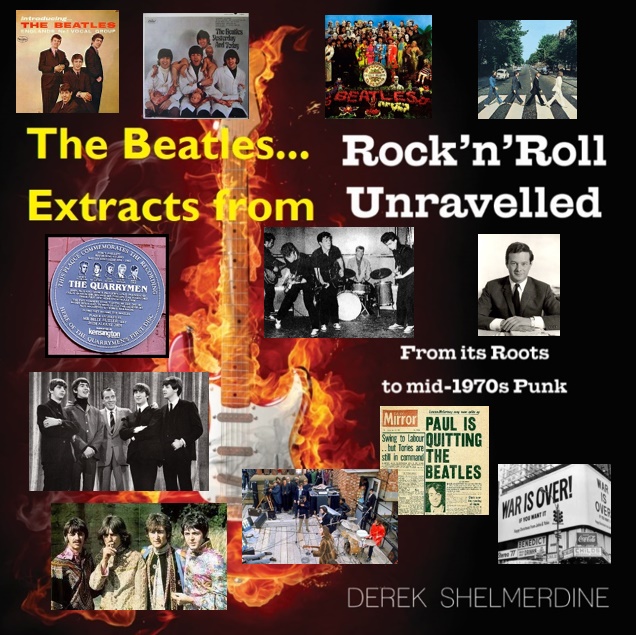
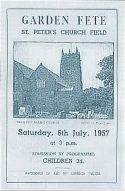
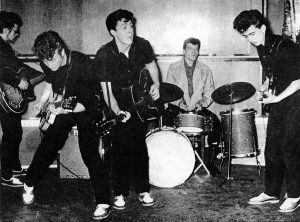
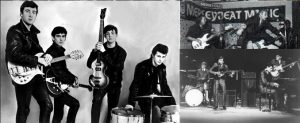
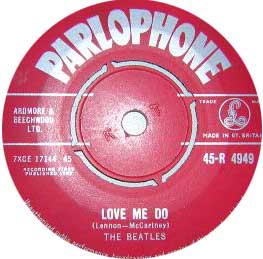
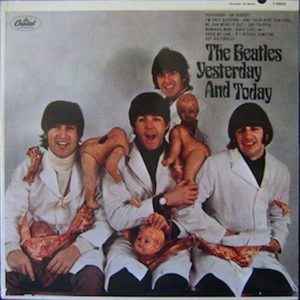
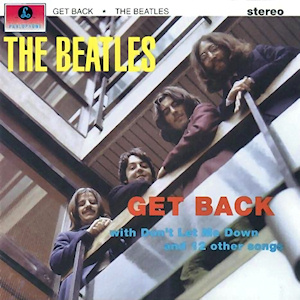
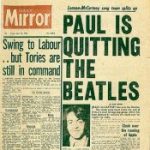
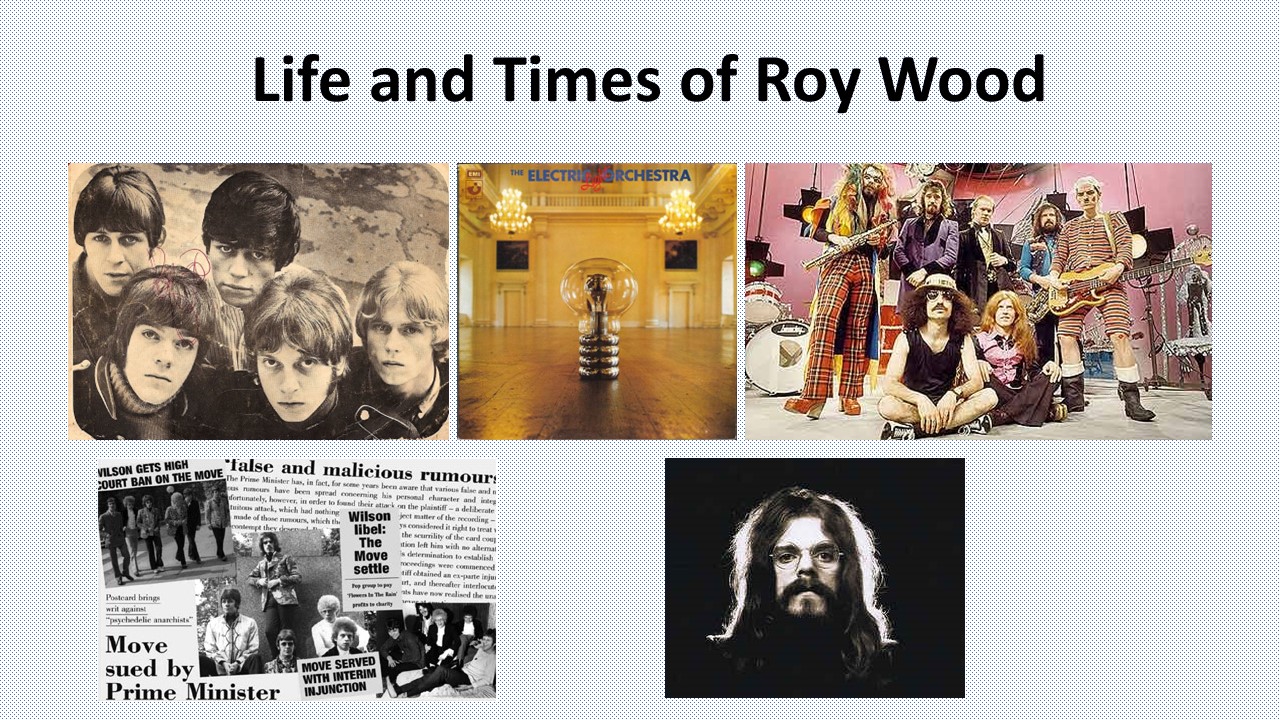
I went over this web site and I conceive you have a lot of superb info, saved to my
bookmarks (:.
You actually make it appear really easy with your presentation however I in finding this matter to be really something which I think I would never understand.
It seems too complicated and extremely large for me.
I am looking ahead in your next publish, I will try to get the grasp of it!
Very interesting subject, appreciate it for posting.
Thanks for every other informative website. The place else could I get that
type of information written in such an ideal means? I have a mission that I am just now working on, and I’ve been at the glance
out for such information.
Wonderful blog! I found it while surfing around on Yahoo News.
Do you have any tips on how to get listed in Yahoo News?
I’ve been trying for a while but I never seem to get there!
Many thanks